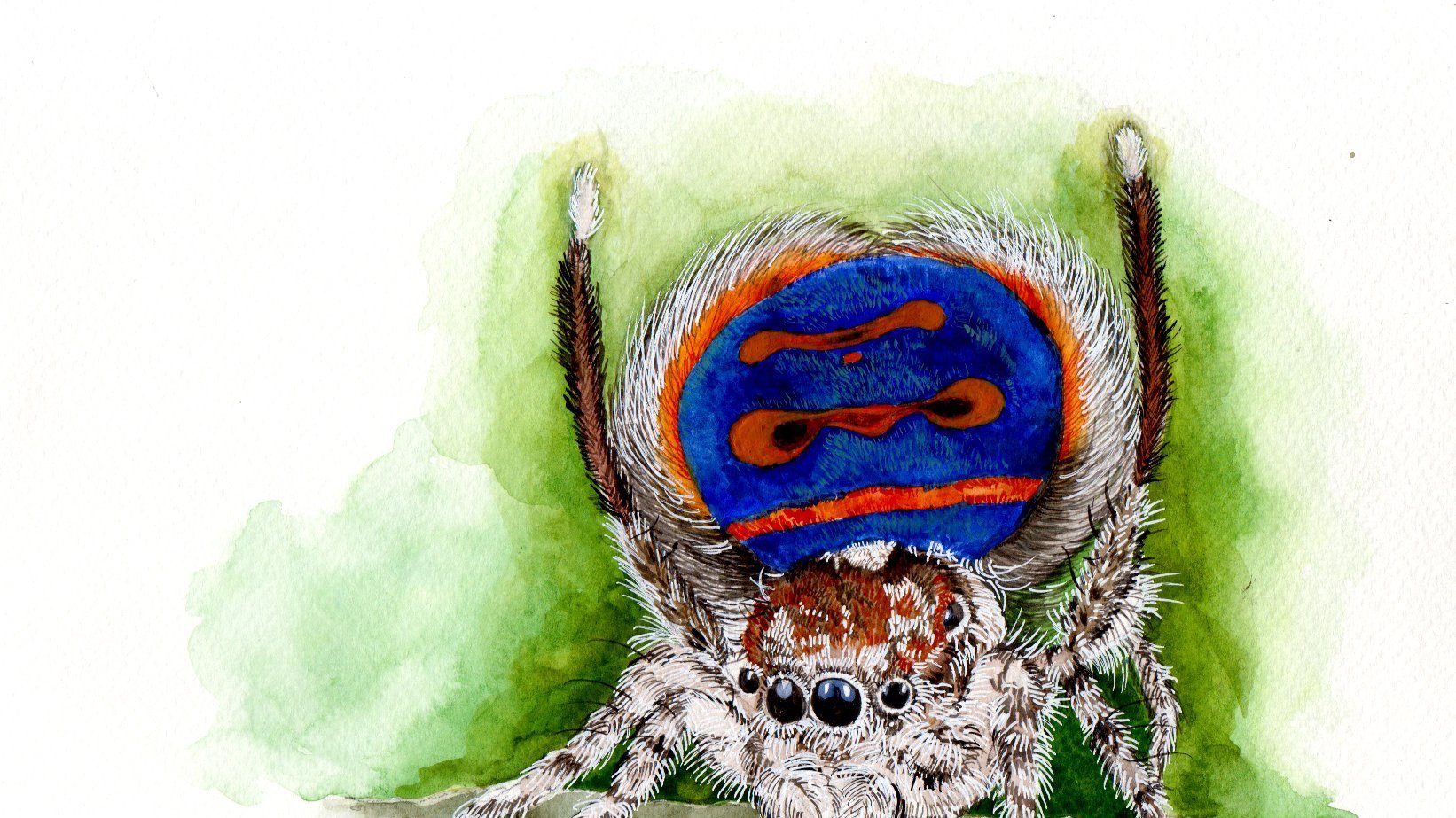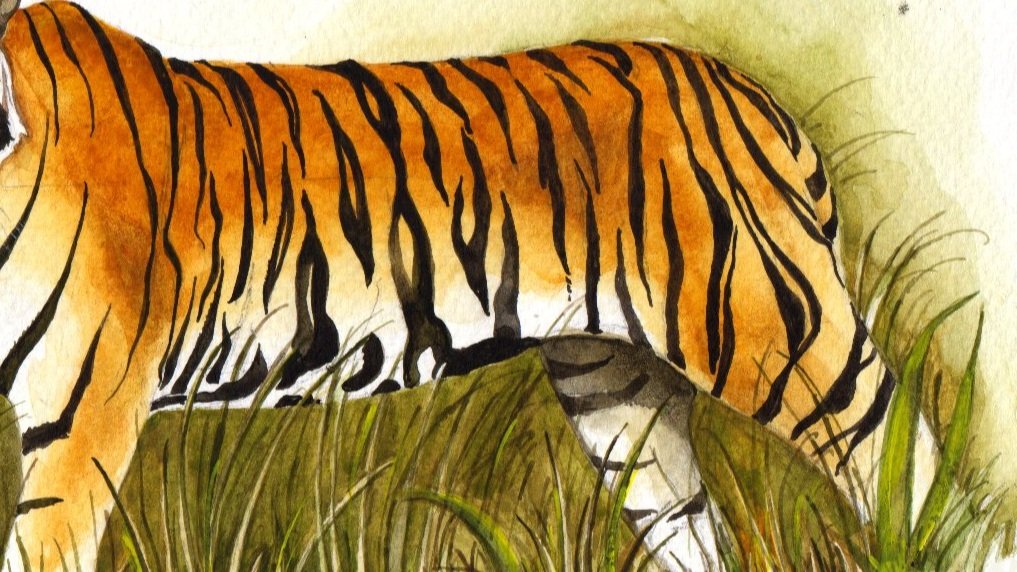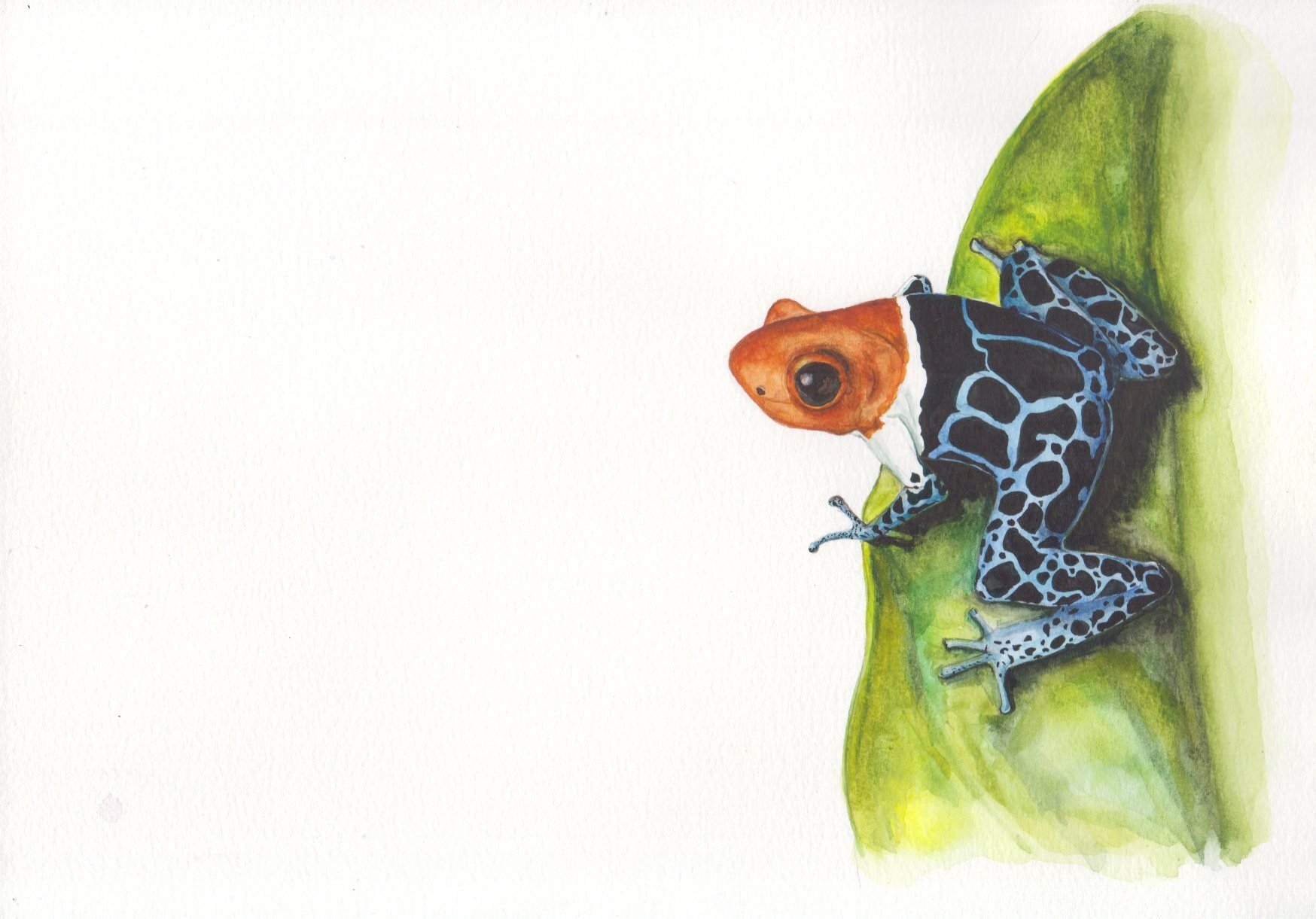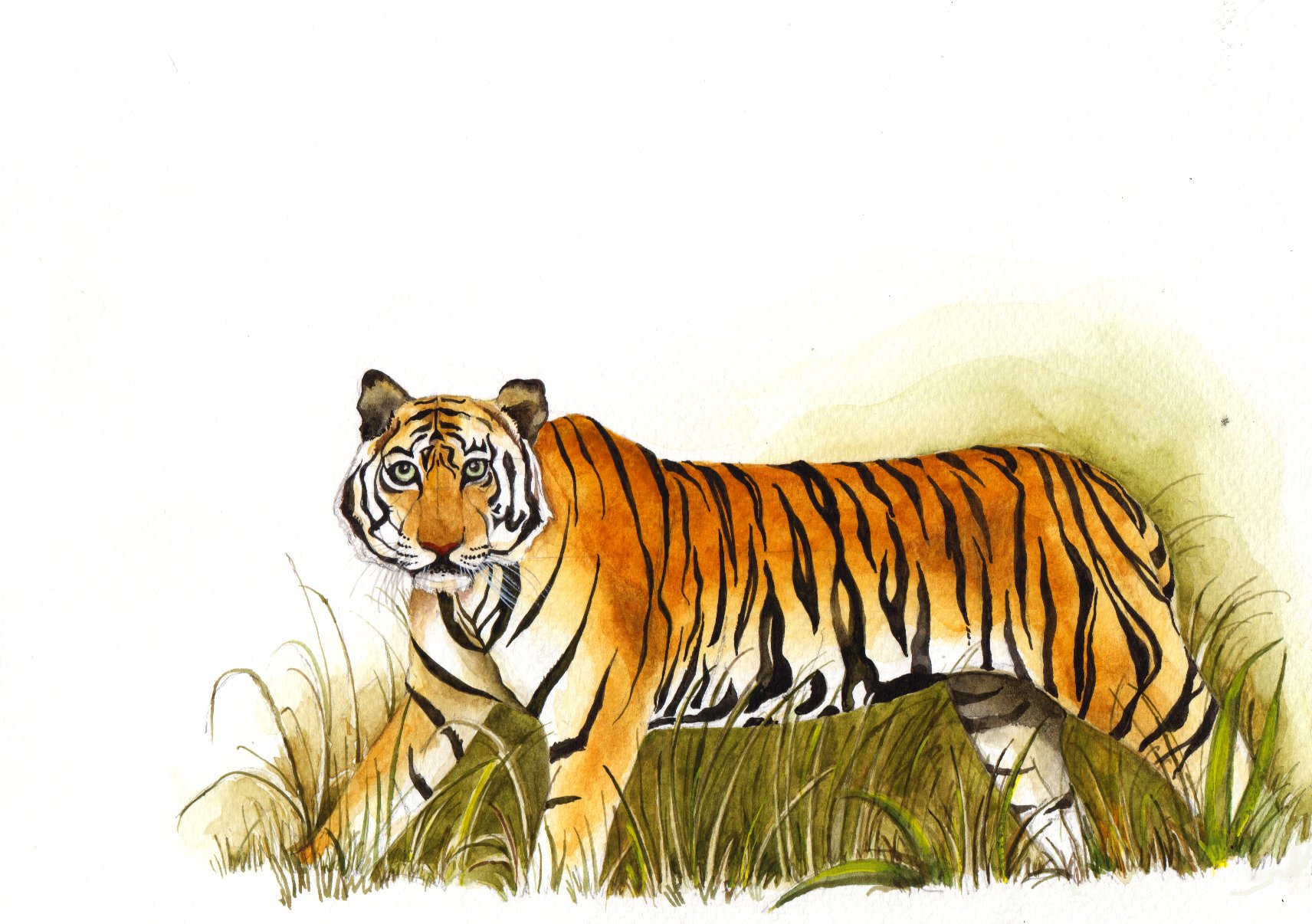
Beauty of Nature: An Evolutionary Truth
Dr Arijit Chatterjee
INDIA
Watercolours meet science in Arijit’s illustrated anthology project completed in 2022 from Kolkata, India. An artist embedded in scientific research, Arijit has a PhD in wildlife conservation. He is an avid researcher and has worked in the fields of ecology, wildlife, conservation and evolution for 15 years. Each image in Beauty of Nature - An Evolutionary Truth is accompanied by literature to detail how the process of evolution has resulted in an abundance of awe inspiring beauty in nature. From vivid bioluminescence and elaborate dances to impressive physical transformations and cryptic camouflage we start to understand that the key to these natural phenomena is evolution. All writings by Arijit Chatterjee.
“Interestingly this beauty of natural world is not created by any supernatural entities but originated over million years of evolution of life. In the last thirty years human society became aware and concerned about different natural phenomenon but very few resources are available to understand this elegance of nature in evolutionary perspective.”
- Arijit Chatterjee

Chapter 1
Display
Indian Peafowl
There is nothing more beautiful in nature than a male peacock (Pavo Cristatus) in full display with his lustrous blue green tail dotted with eye spots. However the same trait which make them beautiful concurrently is maladaptive for their survival in wild habitats. The long and heavy tail reduce their ability to move fast which enhances the chance of getting attacked from large carnivorous predators and this seem to violate Darwinism. In 1970, Amotz Zahavi has answered this deceptive ambiguity with his ‘handicap principle’. During mating season male peafowl starts dancing radiating their tail resembling a fan in front of females who doesn’t possess any such extensions. Out of many males, female chose who has long tail and maximum number of eyespots in it. Carrying more feathers with eye spots requires more metabolic energy which reflects its higher evolutionary fitness and females prefer this for their offspring.
Peacock Spider
The coastal Peacock Spider (Maratus speciosus), a tiny little jumping spider endemic to the vegetation of the coastal sand dunes of Western Australia. Like all peacock spiders it is small in size, sexually dimorphic and adult male has no shortage of color, size, or personality. The males have a natural decorative fan like extension attached to their abdomen and during courtship they performs an intricate dance-like mating ritual raising his third pair of legs and displaying their vibrantly colored fan in front of female to impress her.
Himalayan monal
One of the enigmatic pheasants from the Himalayas is Himalayan Monal (Lophophorus impejanus). They are sexually dimorphic and male is covered with multi-coloured plumage with a green metallic crest, while females have less attractive brown body with white patch in throat. During mating season male Monal display a courtship dance using their vibrantly coloured wings in front of the females to show its sexual fitness.
Greater flamingo
Greater flamingos (Phoenicopterus roseus) are the most easily recognizable water birds because of its bright pink body, heavily hooked bill and long wading legs. They are social animal living in colony of thousands and prefer saline lakes, estuaries or lagoons that usually lacks vegetation cover. Flamingos are filter feeder and feeds on the algae, crustaceans, mollusks, different small insects that live in the shallow saline pool. The vibrant pink colour of flamingo comes from the beta-carotene, a red-orange pigment that’s found in high amount within their food resource. The carotenoid breaks down in pigments by the digestive enzymes and absorbed by the fats in liver which finally gets deposited in the feathers and skin of flamingos. Very large amount of carotenoids are required to attribute this flashing external colour. Individual with less carotenoid diet appears pale.
Vogelkop superb bird-of-paradise/Crescent-caped lophorina
Vogelkop superb bird-of-paradise/Crescent-caped lophorina (Lophorina Niedda) is a sexually dimorphic bird endemic to New Guinea. Male has black plumage with two erectile fans and metallic blue, fan-like breast shield and patches above the eyes. Female has black head, brown wings and tails with striped underside. During mating season male bird starts calling at high pitch to attract females, as the female approaches they start a courtship dance displaying their black fans to form a crescent like structure and flash their electric blue fan like breast shield to impress female. The Female chooses the fit male among all the displaying one who it wants to mate with.
Bioluminescent fungi
Bioluminescence is an ability to emit light from the body of living organisms. It is more common in several marine organisms like dinoflagellates, bacteria, fish and jelly fish and land insects like fireflies but some terrestrial fungi are also capable to emit. This light emitting phenomenon is a result when energy from a chemical reaction occur in the body of organism which is released as light. Roridomyces phyllostachydis is such kind of fungi found in West Jaintia Hills District in Meghalaya, India. However the reason behind this bioluminescence is still not known properly but it could be to attract insects to disperse their spore or to intimidate herbivores. This fungi grows in dead bamboo sticks and local residents use this as natural torch to navigate forest during night time.
Spotted deer
Spotted deer (Axis Axis), an even-toed ungulates arguably is the most beautiful deer species of India because of it’s golden-copper body dotted with white spots and presence of gigantic antlers in males. Males use their antlers to direct competition with other males to get access to the females. Selection pressure will favour any trait that promote such victories and that results transmission of more fit trait to next generation which enhance it’s chances of survival.

Chapter 2
Hide
Bengal tiger
The colour and stripes of the tiger (Panthera tigris) is evolved to perform a specific role, providing convenient camouflage to hide from prey. Their orange colour with black striped body helps them to blend in well with the jungle floor. Deer, one of the major prey group of tiger has dichromatic colour vision, i.e., unlike human who can distinguish red, green and blue they can only identify blue and green. Thus instead of orange body colour of tiger, deer only perceive green which make it harder for themselves to spot tigers hiding behind the bush or prowling within the grass. This gives the tiger its much needed advantage to catch its prey by surprise.
Arctic Fox
Distribution of Arctic fox (Vulpes lagopus) spreads throughout the northern tree line in the Arctic tundra. To adapt with the extremely cold temperature of the arctic region they developed thick and highly insulating furry coat. Over the course of a year they grow two distinct forms of body hair; in summer when the snow have melted they grow thin and dark greyish brown coat to get camouflaged against the darker background of rock and vegetation. The winter coat is white, thick and furry which help them to get blended with the bleached snowy background. This dimorphism with season help the Arctic fox to be a better predator as well as to hide from its own predator.
Orchid mantis
Orchid mantis (Hymenopus coronatus) is a unique looking insect spread over in South-East Asian region, have excellent similarity with blossom. While sitting on a tree twig, or leaf, their body coloration and petal like mid and hind leg conjointly generate an appearance that looks exactly like a bloomed flower. Contemporary research advocates the ability to prey on insects designed the evolution of the orchid mantis, leading to bigger females that resemble flowers. It is a typical example of mimicry where orchid mantis mimic themselves with flowers and attracts the pollinators as their prey.

Chapter 3
Warn
Poison dart frog
Poison dart frogs are the group of species that have huge range of colour combinations, popularly known as ‘jewels of the rainforest’. These frogs have poison in their skin that make them distasteful to the predators. The vibrant coloration of these frogs warns predatory species about their toxic nature. If a predator mistakenly consumes one and survive, it will remember its consequences and never try to prey on the similar ones in the future. Native Americans use these toxins in the tip of their blowdart for traditional hunting. This is an illustration of Red-headed poison frog (Ranitomeya fantastica).












